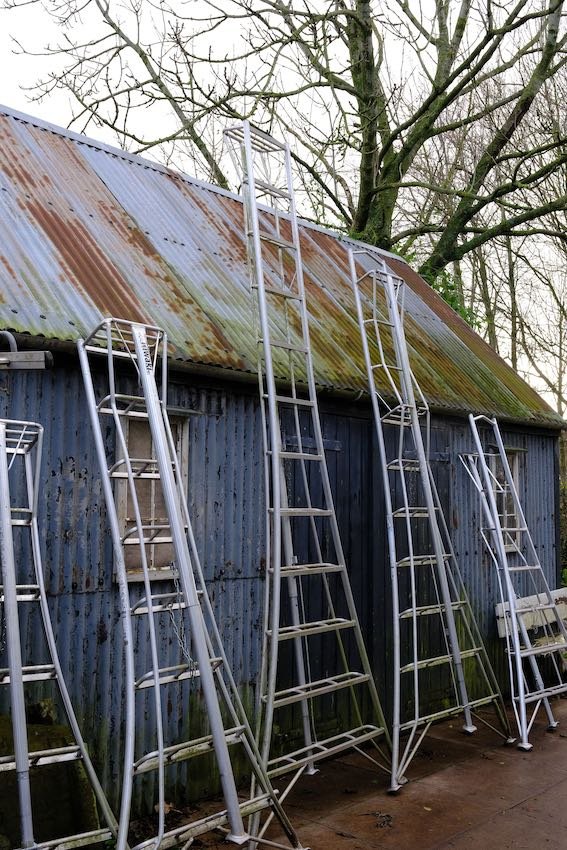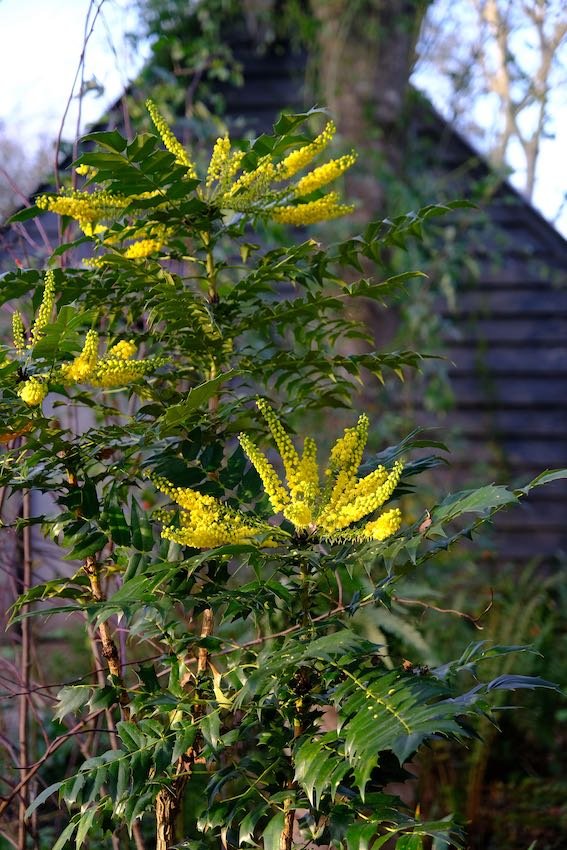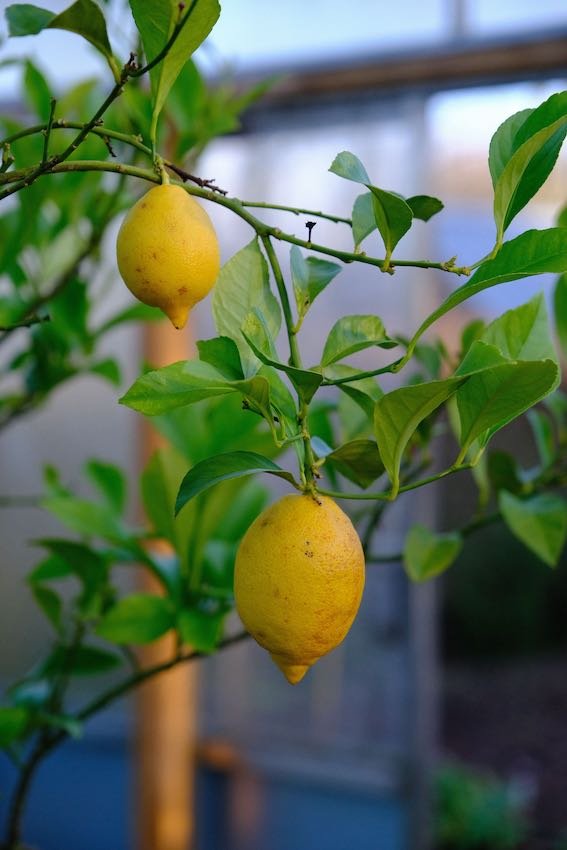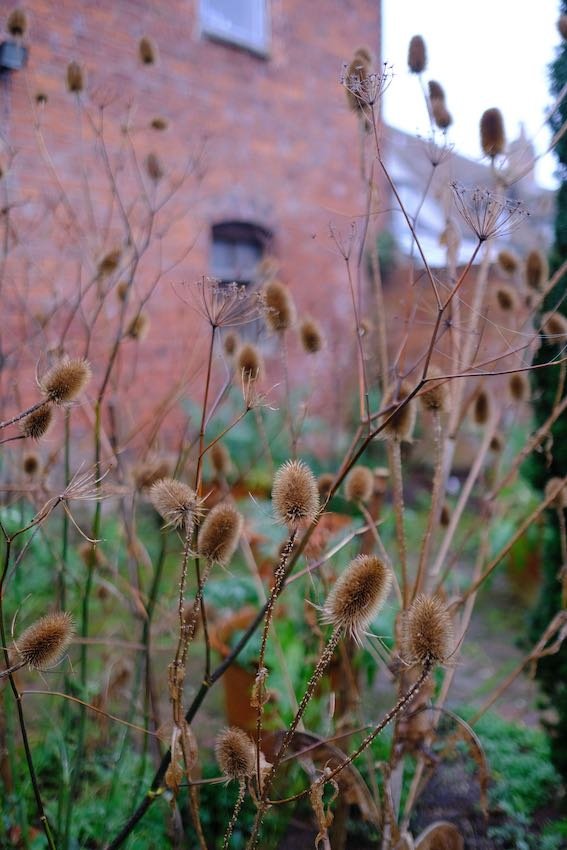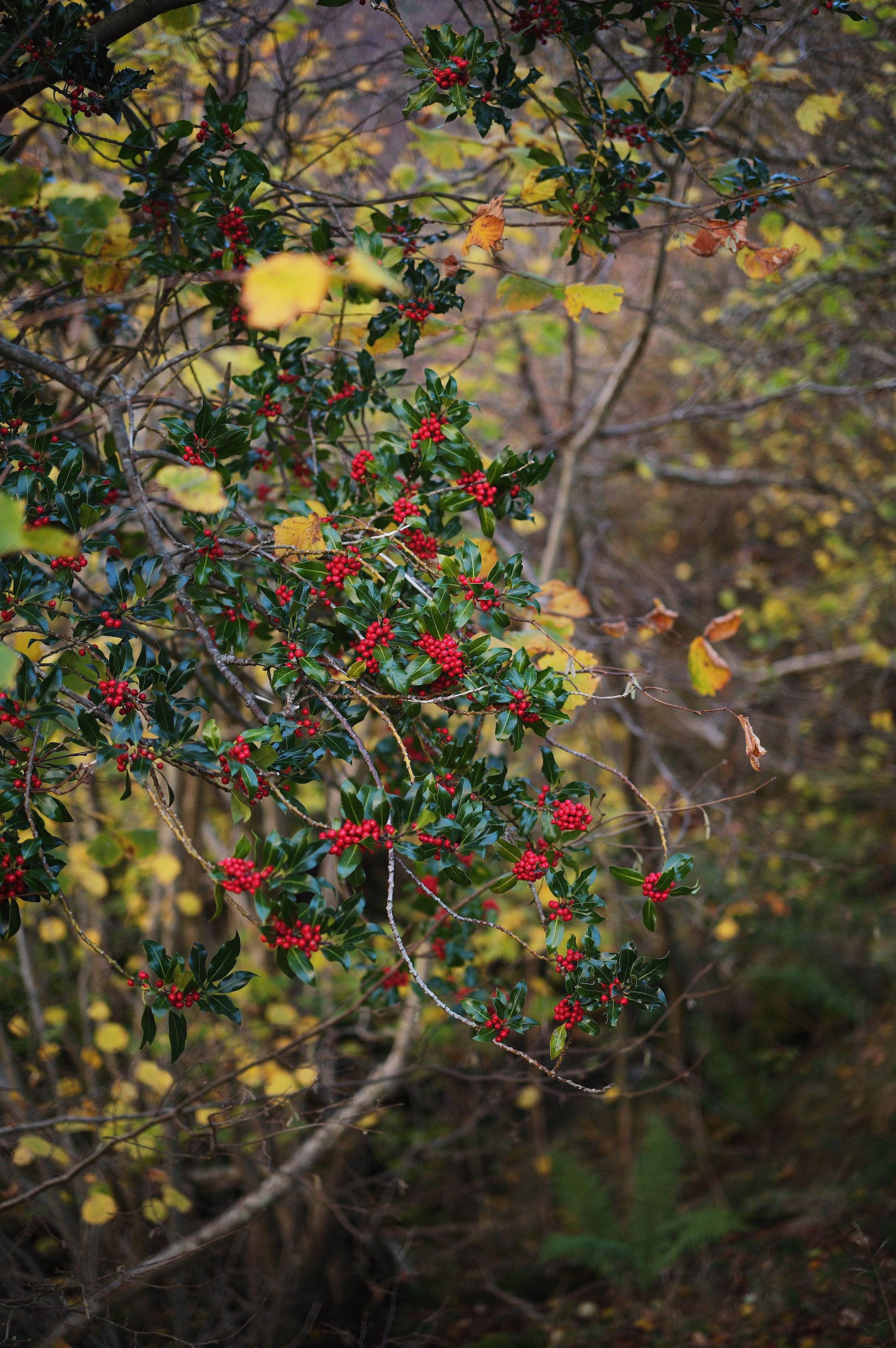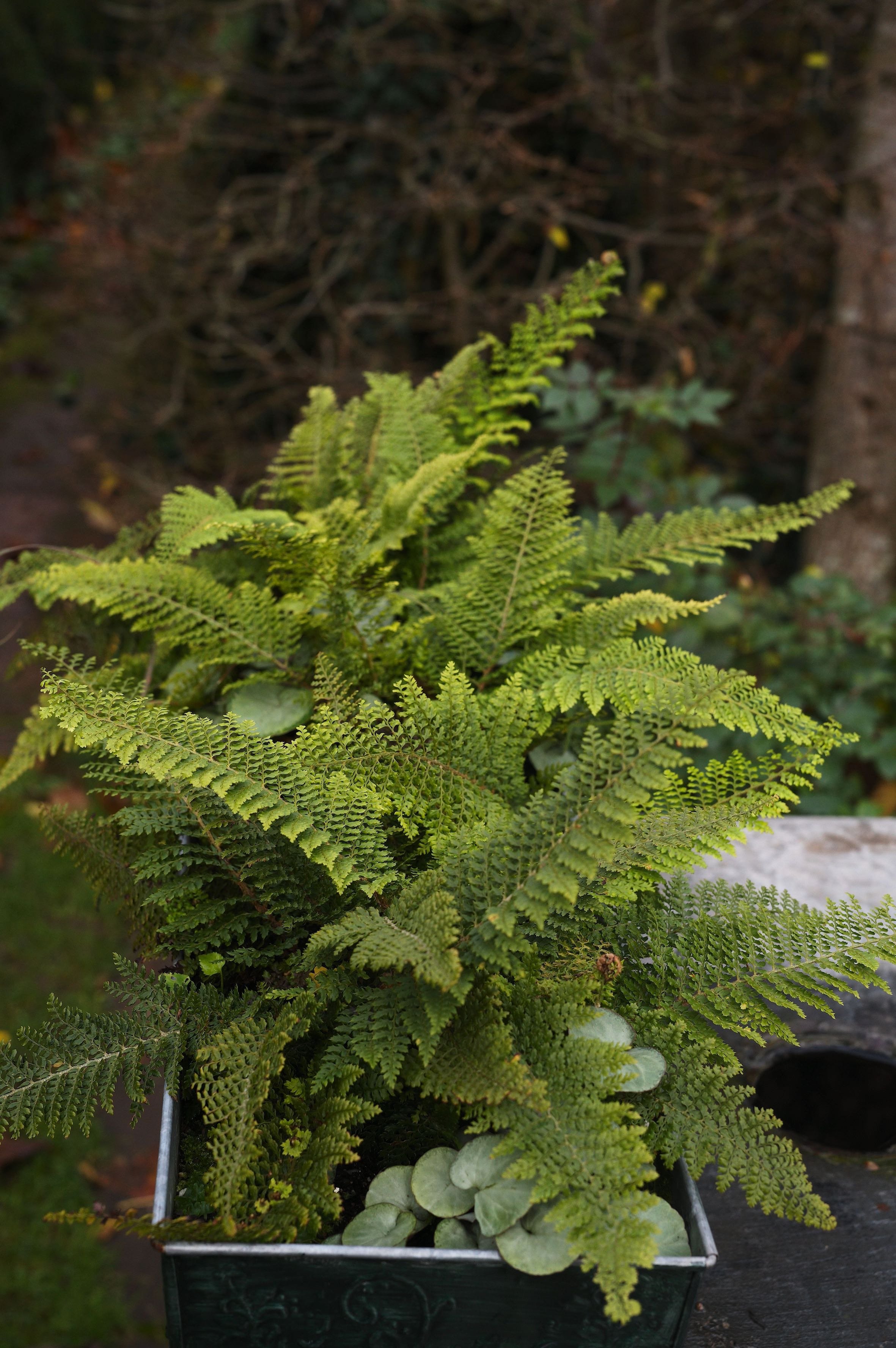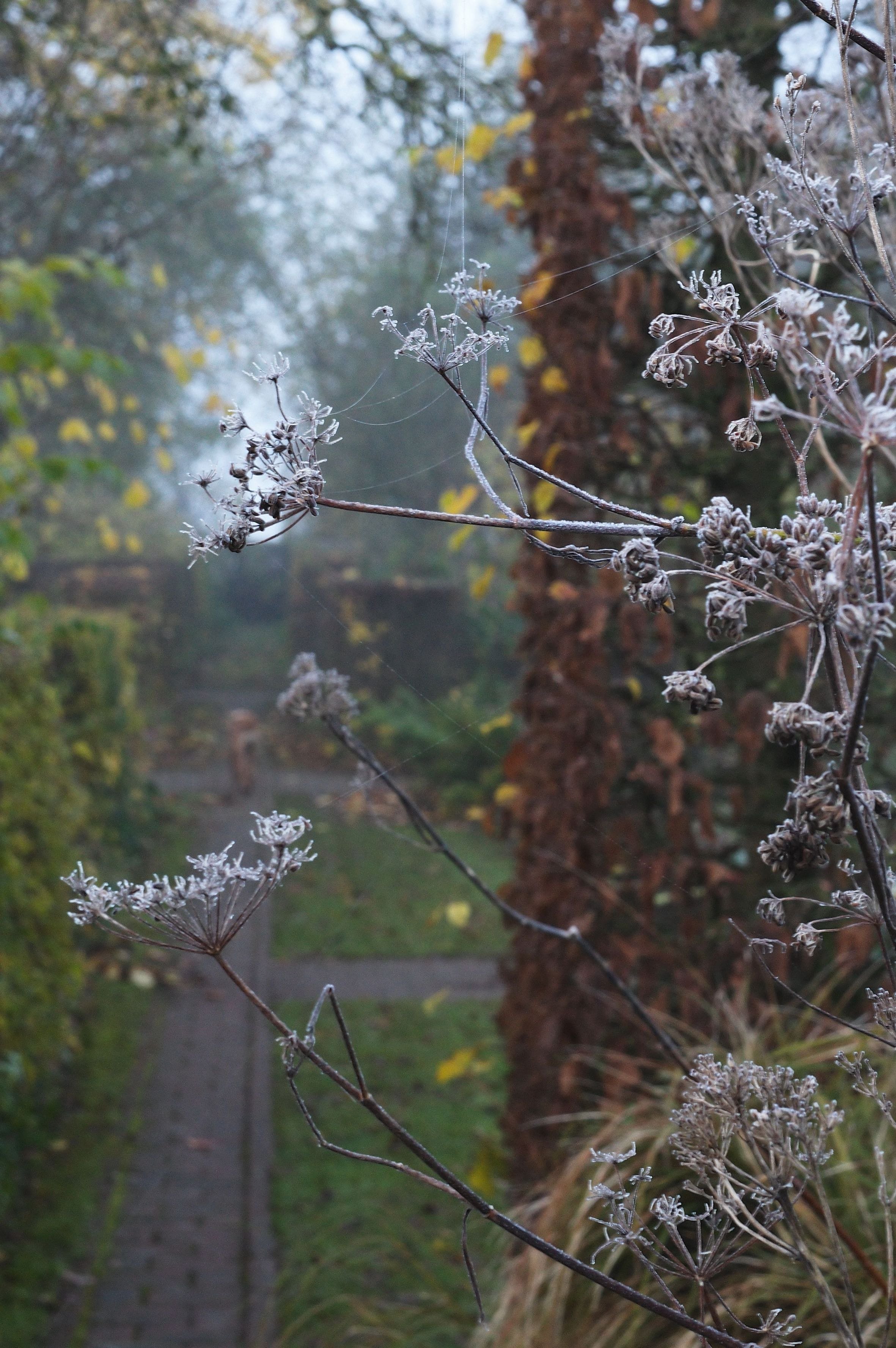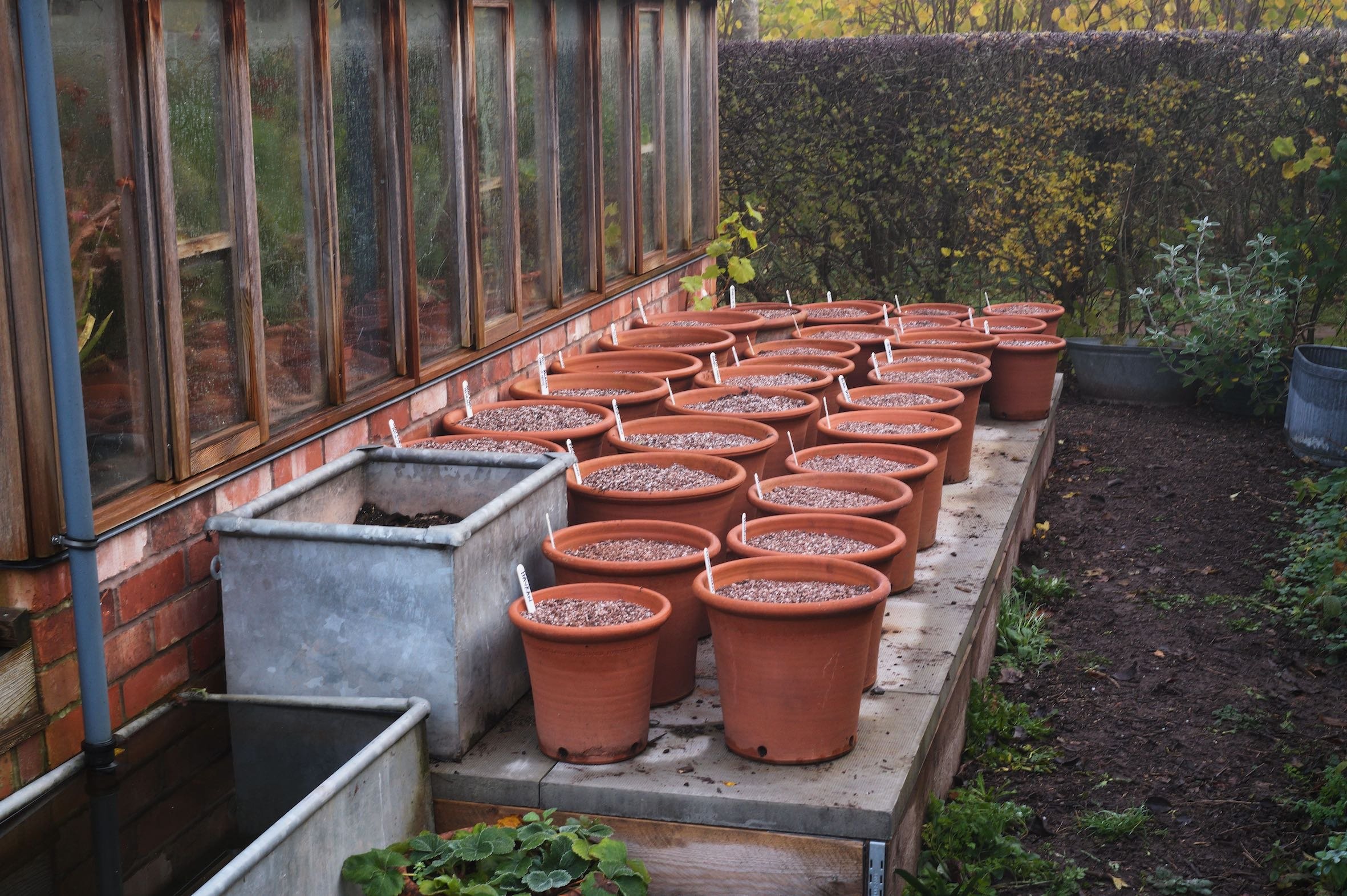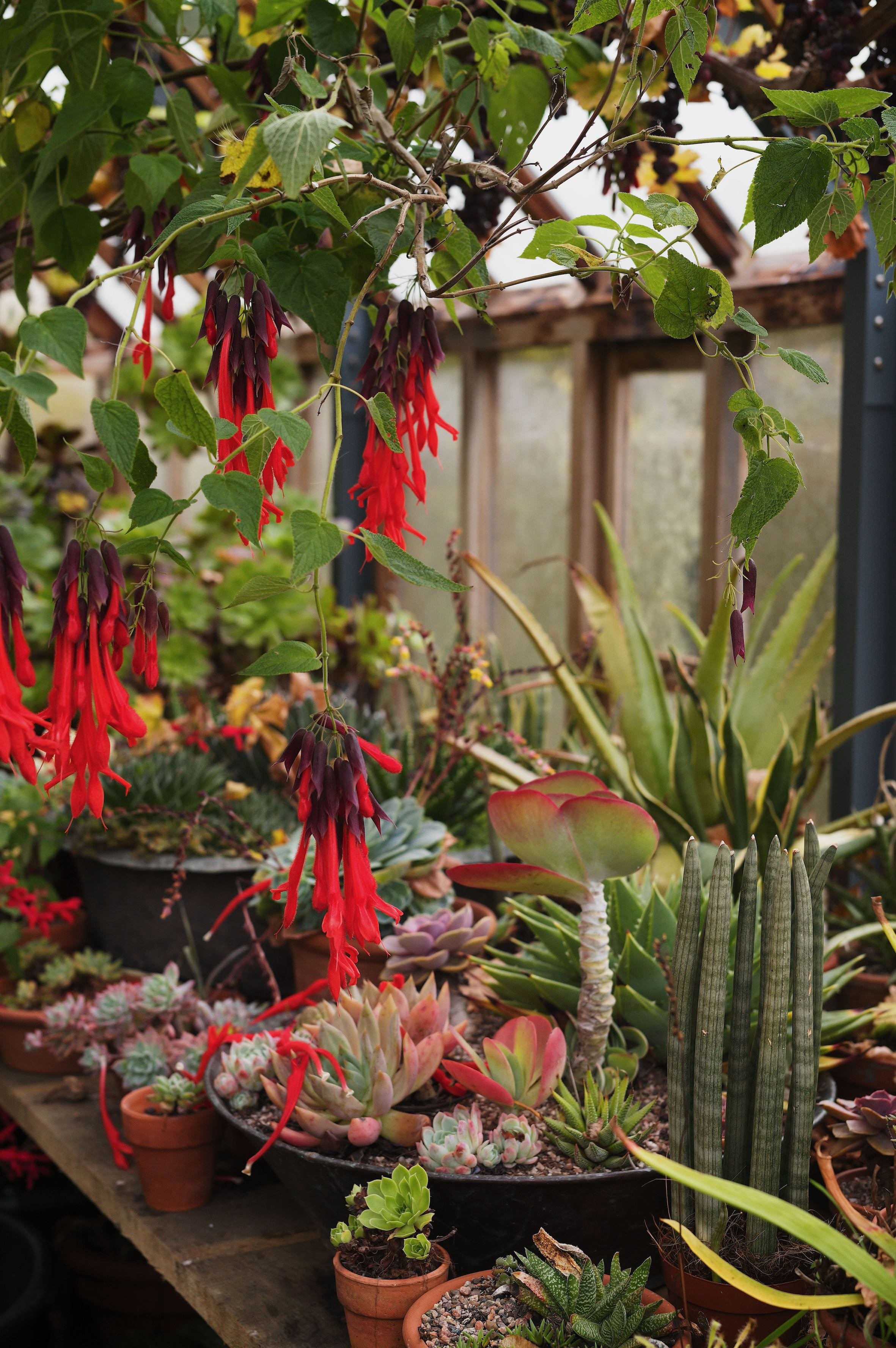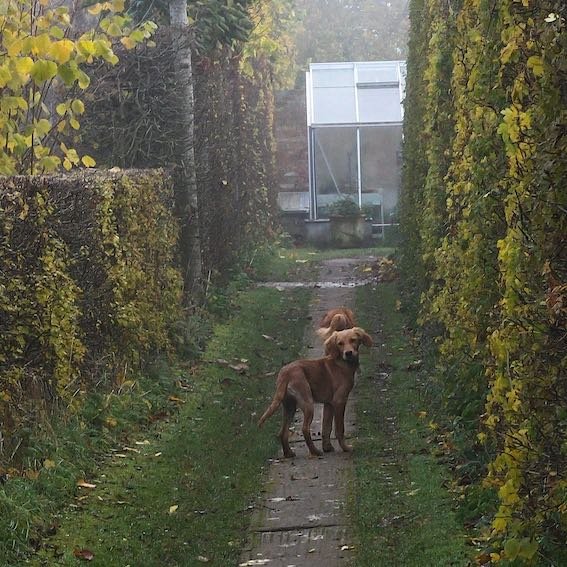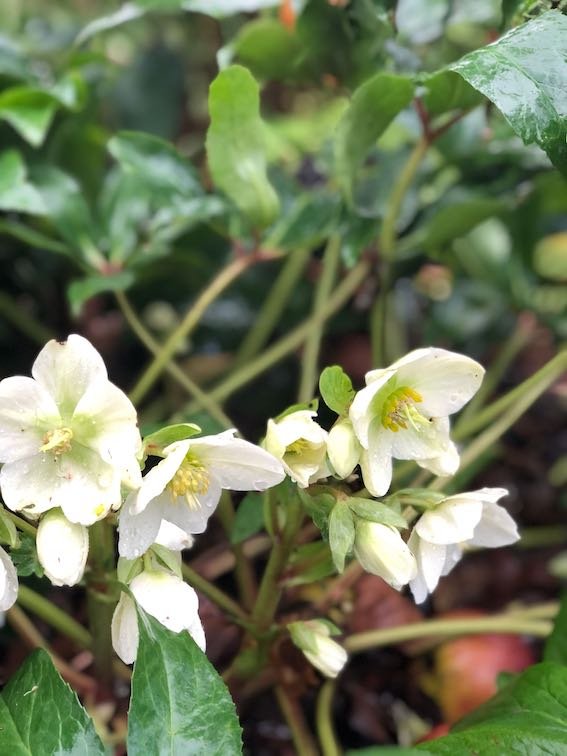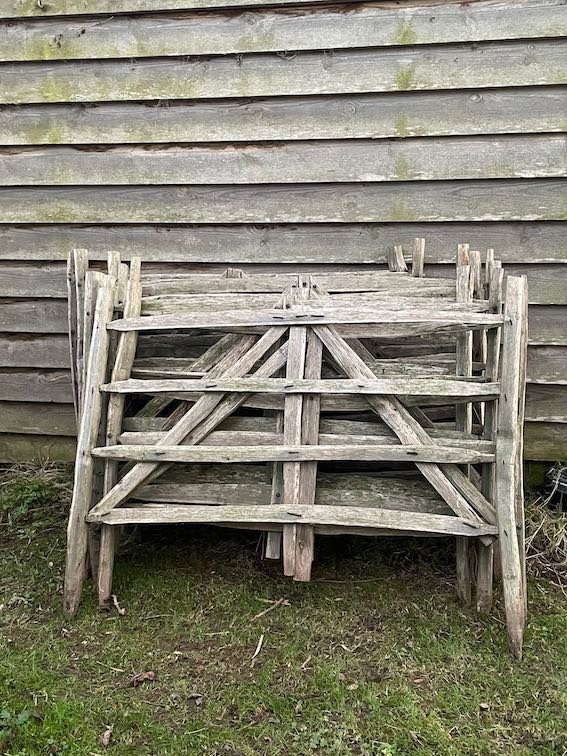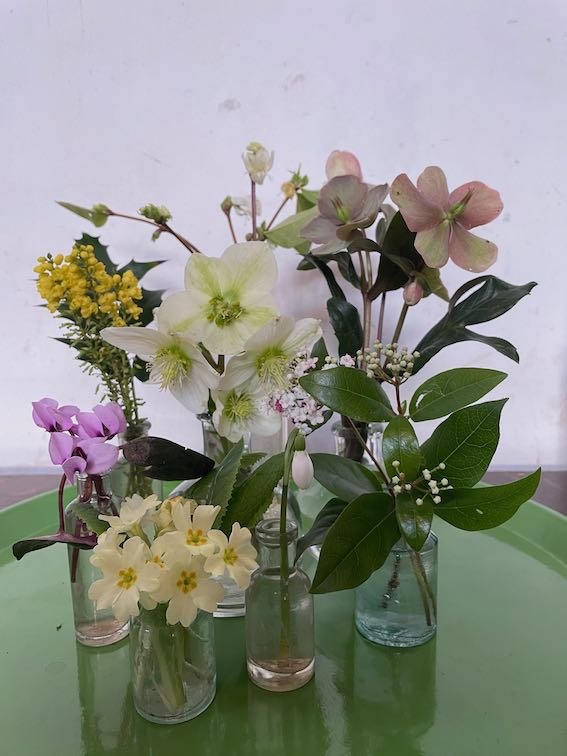December 2022
December 2022 at Longmeadow has begun cold and foggy, the weather raw and the cold seeping into one's bones. But it is dry, and that is something to be thankful for at this time year. The irony, of course, is that 2022 has been one of the driest years ever and certainly the driest since we came to this garden 30 years ago. Autumn was also mild to the point of oddness. It was unsettling, out of kilter with the rhythm of the seasons.
But climate change may give out unseasonable heat but cannot alter the movement of the sun and the days have become, by the beginning of December, pinched back to the bare minimum, with morning light creeping in about 8am and dusk starting to draw tight before 4 in the afternoon and fully dark by 4.30. Sometimes we do not see the sun for a week at a time. The garden, like people, closes in on itself and withdraws, offering very little.
But there are a few lovely gems to celebrate.
The first primroses are appearing along with a few violets sprinkled along the base of the hawthorn hedges. White hellebores are starting to flower in the Spring Garden and mahonias yellow flowers are perfuming the winter air. There are brassicas, parsnips, beetroot and ruby red chicory from the vegetable garden and the bulbs are starting to sprout strongly - with even perhaps the first snowdrops appearing around Christmas time.
Christmas is, of course, the highlight of the month for many of us and as well as all the usual celebrations for me it marks the moment when I begin to get my garden back and to re-engage with it.
On Boxing Day I sow chillies and tomatoes as well as onions and rocket and perhaps some sweet peas. It is, for me, the start of the new season and although winter has much, much more to come, my eyes are set firmly on Spring and the gardening new year.
Christmas Plants
Christmas Trees
The most popular Christmas trees are,Norway Spruce (picea abies), The Nordman Fir (Abies nordmanniana,) or the Colorado Spruce (picea pungens). All three are very good, have specific virtues and can last for a long Christmas season if looked after properly.
All three will also grow in most gardens if they are bought with healthy roots and planted carefully as soon as possible after Christmas.
If you get confused between any of the Spruces (Picea) and Firs (Abies) - there is one easy way to differentiate the two species. The cones of spruces hang down whereas the cones of Firs stand up like candles.
The Norway Spruce grows very fast and for centuries it was the main source of softwood, or deal. It is officially Europe’s largest tree and given the right conditions of damp, cold winters and damp, cool summers, it will grow to more than 200ft tall.
It is very resistant to cold and frost-hardy although it never thrives when grown on chalk or limestone.
Abies nordmanniana, The Caucasian or Nordman fir is much more truly evergreen than the Norway Spruce in that it only sheds its needles after about 15 years before replacing them. It also has more horizontal and rather more dense branches. The effect can make a more compact, more evenly shaped Christmas tree.
It originates from the Eastern shores of the Black sea and will grow even bigger than the Norway Spruce, reaching 225ft. It grows on limestone in its Caucasian home but like the Norway Spruce it grows best in moist, cool, slightly acidic conditions.
My favourite Christmas tree is the Colorado, or Blue, Spruce, picea pungens. Although it comes from the southern states, it originates from a high altitude, so is very hardy and grows into a tall, very straight, rather beautiful tree, with glaucous blue needles the colour of cardoon or artichoke leaves.
The high altitude and bright mountain light gives it a rather stiff habit which is one of its main attractions as a Christmas tree. If you do plant one in the garden it will grow much stronger if given maximum sunlight.
Caring For Your Christmas Tree
Get one with roots if possible, even if you are not intending to plant it. Pot it into as large a container as you have and fill this with sharp sand or compost. Sand is perfectly good for the few weeks it will be indoors. Water it and keep the sand moist.
Buy a tree holder for a cut stump with a reservoir and keep it topped up with water. Treat it like a cut flower. This will do more than anything to stop it shedding its needles.
NEVER place your Christmas tree by a radiator. It will respond by immediately shedding its needles.
Keep it as cool as possible. All these evergreen firs have adapted to cope with cold winter weather and will react to central heating heat by dropping their leaves in order to conserve moisture. A draughty hallway is ideal.
Take your tree to the council shredder after Christmas if you are not going to plant it so it can be recycled.
Mistletoe
The Mistletoe in my garden has had ripe berries for the past month - which, like everything in the garden this year, is unseasonal but means it is perfect for Christmas.
Mistletoe likes damp weather and needs a host to grow from. It is not truly parasitic in that it does generate some of its own food via photosynthesis from its evergreen leaves but the roots work into the host wood like spokes of a wheel and will, in time, constrict and kill the branch - and therefore ensure its own death too.
Male and female plants can be distinguished by their growth - male ones hang lower and have no berries and female plants carry the milky white berries and are more upright.
The berries are eaten by blackcaps and thrushes that then wipe the sticky fruit from their beaks which, in turn adhere seeds to the bark which then germinate.
The easiest way to cultivate it is to replicate that and rub ripe fruits containing the sticky seeds into the bark of a hawthorn, apple, poplar, Lime (tilia) or field maple. Next spring a small shoot will appear and quickly establish itself. The apples in my orchard now have dozens of large bunches as well as in the hedgerow around it.
Holly
As one of the tiny handful of British native evergreens, Holly is a fixture not just of Christmas but of every garden and British landscape.
English Holly, Ilex aquifolium, can grow to a really substantial tree of some 80ft but will also clip well to form a dense evergreen hedge or even topiary.
Although there are over 400 species of Holly there are easily as many again cultivars and hybrids .However not all will carry berries. Most holly trees are either male or female and Males never produce berries and females will only make them if there is a male nearby. This task is made rather tricky by the names given to various of the most popular varieties. So ‘Golden Queen’ is actually male and ‘Golden King’ is female.
Holly casts a deep, dry shade but grows best in moist, rich soil with good sunlight. The best time to plant it is in April and keep it well watered for the first few years. It may shed some leaves after planting but in general If a mature holly starts to drop its leaves at any time of year other than spring then it is a good indication that it needs a good soak.
Like Yew or box, holly regenerates from bare wood so if you have an overgrown, thin holly hedge or shrub do not be frightened of cutting it right back to the bone ( the best time to do this is March or April) and it will resprout vigorous, compact growth that can subsequently be clipped to remain tight and dense.
Ivy
For most of the year Ivy is much maligned, however over the coming weeks it will be given some of the respect it fully deserves as as part of the seasonal decorations with swags of green indoors and wreaths hanging on our front doors.
But I like ivy as a garden plant and there is no need to fear it. It is one of our very few native evergreens and has many virtues that every gardener should nurture. It provides a green wall or surface at a time of year when almost nothing else is giving any kind of display.
It will tolerate extremes of sun and cold, will grow in almost complete shade and, once established, with very little moisture. It is self-clinging so needs no elaborate support structure.
Ivy provides really important winter cover for insects, birds and bats, all of which are an important part of a healthy garden filled with beneficial wildlife. It flowers very late in the year so is one of the prime sources of nectar for autumnal insects and honey made from ivy flowers has a particular crystalline quality that is delicious.
To make it clear, Ivy is not a parasite so does not draw nutrients from the plant that it climbs up. Indeed, if you sever the main trunk of Ivy so that no nutrient is being sent up from the soil, it will invariably die. However Ivy will shield a w tree from light, which will eventually kill it - just as a black polythene bag put over the tree would kill it.
Hedera helix, is only one of five native British woody climbers (the other four are clematis, honeysuckle, woody nightshade and the dog rose) although it will make an excellent ground cover once established. Hedera helix hibernica has very large leaves, grows very fast and is not so inclined to climb so is the best choice for this.
Ivy flowers are followed by the characteristic black berries which are highly calorific and an important winter food for birds such as blackbirds and thrushes. However, if the ivy plant is very exposed it will never flower because the season's new growth is too tender to survive the cold and develop mature leaves.
So, deck your hall this Christmas with great swags of Ivy but also learn to welcome it in your garden.
Brussels Sprouts
Brussels sprouts have a bad press but I regard Christmas dinner as incomplete without them.
The truth is that a properly cooked sprout is delicious as well and as well as being being packed with vitamins A & C , are rich in folic acid.
Sprouts are thought to have developed in Belgium - hence the name - in the 16th century and were hardly known outside France and Belgium until the nineteenth century and the first documented British recipe is from Eliza Acton in 1845 and it seems that they only became popular after the first world war. So the ‘tradition’ of serving them at Christmas with the Turkey, is, like many of our most cherished traditions and institutions, a relatively modern invention.
I grow them in the same way and rhythm as the rest of my winter brassicas. I sow my seeds into plugs in March or April, potting the emerging seedlings on into three inch pots and then planting them into their final position in June or July. As part of the vegetable crop rotation they are ideal for following on after broad beans or early peas but any well manured soil will do.
The wider you space the plants in the soil the bigger the resulting sprouts will be but 2-3 ft between each plant is about right. This will seem a huge gap but the space can be used for salad crops whilst the sprouts are growing. Keep the growing plants well watered and stake them before they start to flop under their own weight.
Cold improves the flavour down to about minus 10, so the best pickings are likely to be after the first hard frosts. But if the weather turns really cold the best bet is to cut the whole stem, remove the leaves and hang it up in a cool, dark place where they will keep for up to a month.
December Jobs
Tulips
Tulip bulbs have been hard to get hold of this year but if you do have any that are unplanted then as long as they are in the ground or potted up by Christmas they will flower absolutely normally next April and May.
If they are in the ground try and plant them as deep as possible but they grow very well in pots as long as they have good drainage.
Clean Plastic Pots and Labels
We are all now trying to use much less plastic in our lives and especially so in the garden. However, the worst offender is single-use plastic and the more that you can reuse a plastic container or plant label the better. The easiest way to do that is to to wash all your plastic pots and store them carefully in sizes so that they are ready for use in spring.. The better you care for them, the longer they will last - and the less plastic you will buy.
As for plant labels, wash them all and then, when they are dry, take some wire wool and scrub each one clean of last year’s writing. Permanent marker, biro and pencil all comes off very easily this way. I do this every year to hundreds of plant labels and reuse the same ones many times. Not only does this cut down dramatically on plastic use but also saves money.
Onions From Seed
This is always one of my Boxing Day jobs. Onions are mostly grown from sets put out when the ground is ready between January and April, but seed sown ones have the great advantage of starting earlier so having a longer growing season and, best of all, there is a much wider range of varieties to choose from than the very limited selection of sets that any garden centre can provide.
The seeds are sown in plugs of potting compost - ideally three or four seeds per plugs - and put somewhere warm to germinate. I plant them out as small blocks of seedlings in spring as soon as the soil warms up.
Sharpening Tools
If it is hammering with rain outside or simply so cold your fingers cannot function, you can still go through all your tools and make sure that they are in as good condition as possible for next year.
One of the most satisfying jobs is to clean and sharpen all cutting implements. Hoes can be sharpened with a rough whetstone so they slice through weeds rather than bruise them, secateurs can have all rust removed with wire wool and a little elbow grease and then sharpened as you would a knife so that they can easily and accurately. Sharp secateurs are both better for the plant because they leave a neat, clean cut rather than tearing at it, and much safer for the gardener too because you can focus on where and how you are cutting rather than trying to force it at all.
Plant Hellebores
Every year I treat myself to a few really good new varieties of Hellebores and add them to the hundreds I already have growing. This extend the range adds clean, clear colours that can run from pure white to the almost black inky purple of ‘Black Diamond’ or ‘Queen of Night’.
Hellebores are usually expensive to buy but they are good value because they last for a very long time and occasionally a self sown hybrid marries the best qualities of its parents rather than blending the worst.
Hellebores have deep roots and I always dig a bucket-sized hole and add mushroom compost or leaf mould to it when planting. Keep them well watered for the first year but thereafter they need little attention. However a December job is always to go through them all removing any leaves that have fallen past 45 degrees or that are affected by blight. I then finish the job in mid February so that the flowers can be clearly seen.
Poinsettias
Hundreds of thousands of poinsettias will be given as gifts this Christmas and with a little care these can be made to last looking good for months.
Poinsettias are only really comfortable in damp warmth.Modern poinsettias grown as houseplants are treated with a growth retardant to create the familiar short, bushy shape we all know and love but in their native Mexico poinsettias grow at the margin of the forest to a large 10ft high shrub .
They do not like cool nights, very hot dry rooms or big fluctuations in temperatures, so keep them where there is a constant average temperature, avoiding draughts, cold windows or even very bright spots that can get very hot in the middle of the day. They like plenty of water but let the compost dry out before giving them a really good soak, standing the pot in a sink full of water and leaving it to stand for 10 minutes or so before letting the excess water drain from the pot.
Rhubarb
If you have productive rhubarb clear away any rotting stems and foliage and mulch round( but not over) each crown with a generous layer of manure or compost. If your rhubarb is a little tired now is the time to divide some of your crowns to stimulate fresh vigour. The older, central section of the big, corky roots should be put on the compost and the younger, outer sections of root replanted with the buds about an inch below the surface. Do not pick any stalks from these new sections for the first year and cut the flowers off as they appear. By the second year you should have a good crop and a really good one two years after planting.
Planting Shallot Sets
Plant shallot sets close to the shortest day (Dec 21st) and they will be ready to harvest on the longest day, (June 21st). If you have a piece of ground ready that is dry enough for the soil not to stick to your boots then plant them directly outside, 9 inches apart in rows about a foot apart. This makes them easy to hoe. Do not completely bury them but leave the shoulder of the bulb and tips clear of the soil. I suggest covering them with fleece until March, by which time they should be well rooted and able to resist birds tugging at them. Check them weekly to firm back any that have been dislodged.
Alternatively, if like me, your soil is wet and heavy for months on end, you can plant them now into plugs, just burying them deep enough to sit in the compost. Keep them in a greenhouse or cold frame and then plant out when your soil is ready and has warmed up.
Suggested varieties: ‘Red Sun’ (lovely rich red) ‘Longor’ (French long bulbs with pink flesh) ‘Topper’ round, golden bulbs with a sweet flavour.




